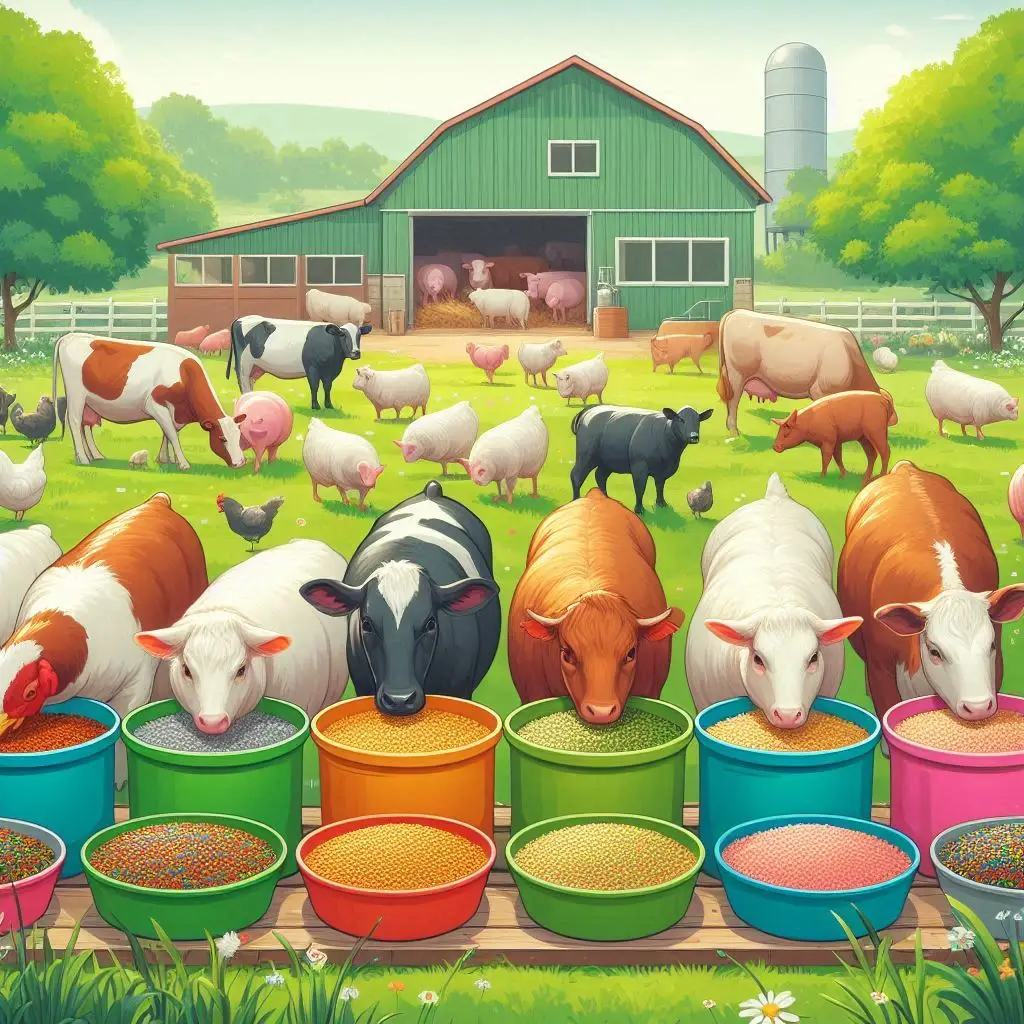Optimal Feeding Regimes for Breeding Dairy Animals

Introduction
Feeding dairy animals properly is essential for maximizing milk production and ensuring their health. The right feeding regime supports breeding success and enhances the overall productivity of the herd. This article explores various feeding strategies tailored to different life stages of dairy animals, focusing on nutrient requirements and management practices.
Importance of Proper Nutrition in Dairy Cattle
Nutritional Needs of Dairy Cattle
Dairy cattle have specific nutritional needs that vary according to their life stage. Proper nutrition is crucial during breeding, gestation, lactation, and dry periods. A well-balanced diet improves reproductive performance and milk yield.
Economic Impact of Feeding Regimes
Implementing effective feeding regimes can lead to significant economic benefits. Improved milk production results in higher profits for dairy farmers. Additionally, better animal health reduces veterinary costs. For more insights on the economic aspects of dairy farming, check out this article on Dairy Farm Economics.
Key Components of a Feeding Regime
Dry Matter Intake (DMI)
Understanding DMI
Dry matter intake is a critical factor in the diet of dairy cows. It refers to the amount of feed consumed after removing moisture content. A lactating cow typically consumes 3-4% of its body weight in dry matter daily.
Calculating DMI for Lactating Cows
For example, a cow producing 30 kg of milk should consume around 15 kg of dry matter per day. This calculation ensures that the cow receives adequate nutrients to support both lactation and overall health.
Total Mixed Ration (TMR)
What is TMR?
Total Mixed Ration (TMR) is a method where all feed ingredients are mixed together. This approach ensures that cows receive a balanced diet with every mouthful.
Benefits of TMR Feeding
- Improved Nutrient Absorption: Mixing feed ingredients enhances nutrient availability.
- Reduced Feed Waste: Cows are less likely to sort through their feed when it is mixed.
- Enhanced Rumen Function: A balanced diet promotes healthy rumen fermentation.
For more information on TMR and its benefits, refer to this guide on Total Mixed Rations.
Fodder Composition
Types of Fodder
A balanced diet should include both legume and non-legume fodder. The recommended ratio is 1:3, with legumes providing protein and non-legumes offering fiber.
Harvesting Timing
Harvesting green fodder at the flowering stage maximizes nutrient content. This practice ensures that cows receive high-quality forage throughout the feeding period.
Supplementation Strategies
Importance of Supplements
Supplementing the diet with minerals and vitamins is essential for maintaining health and productivity. Common supplements include:
- Urea Molasses Mineral Blocks (UMB): These blocks provide essential nutrients when forage quality is low.
- Bypass Proteins: These proteins enhance nutrient utilization during lactation.
For more details on dietary supplements for dairy cattle, check out this resource on Nutritional Supplements.
Feeding Strategies by Life Stage
Calves
Milk Feeding
Calves should receive milk or milk replacer starting from day one. The recommended feeding rate is about 4-6 liters per day. Gradually increasing this amount can promote healthy growth.
Solid Feed Introduction
Introduce calf starter grains around three weeks of age. Early exposure to solid feed stimulates rumen development, crucial for future productivity.
Heifers
Post-Weaning Nutrition
After weaning, heifers require specific nutrition to achieve target weights by breeding age. Aim for 55% of expected calving weight by 13-15 months and 82-85% by 22-24 months.
Growth Monitoring
Regularly monitor heifer growth rates to adjust feeding strategies as needed. Adequate nutrition during this phase sets the foundation for future milk production.
For insights on heifer management, refer to this article on Heifer Growth Management.
Lactating Cows
Lactation Phases
Cows should be grouped according to their lactation stage—early, mid, or late lactation. Each group requires tailored rations to meet varying energy and protein needs.
Grazing Management
During grazing seasons, ensure access to high-quality grass. Supplement with concentrates only when grass availability decreases.
Nutritional Considerations for Breeding Dairy Animals
Mineral Requirements
Minerals play a vital role during the breeding season. Essential minerals include calcium, phosphorus, and iodine. Providing a mineral mixture tailored to local conditions enhances reproductive performance.
Consistency in Diet
Maintaining consistent dry matter intake prevents metabolic disorders and promotes optimal reproductive performance. Gradual changes in diet are preferable over abrupt shifts.
Conclusion
Effective feeding regimes for breeding dairy animals involve a combination of balanced rations tailored to each life stage, strategic supplementation, and careful grazing management practices. Implementing these strategies leads to improved health, increased milk production, and enhanced reproductive performance in dairy herds.
For further reading on optimizing your content’s readability and SEO performance in WordPress, consider exploring these resources:
- How to Properly Use Heading Tags in WordPress – WPBeginner
- How to Use H1, H2, and H3 Header Tags for SEO Effectively – Clicta Digital
More from Livestock Production and Management:
https://wiseias.com/feeding-goats-for-milk-production/
https://wiseias.com/feeding-pregnant-ewes/
https://wiseias.com/feeding-managing-livestock-natural-disasters/






Responses